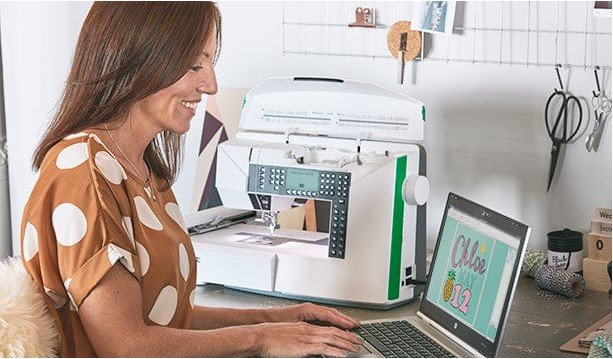You have a vision. It might be a company logo destined for employee polos, a custom design for a sports team, or a piece of art you want to see come to life in thread. You know that to make this happen, you need to partner with a skilled digitizer. But a quick online search reveals hundreds of options, all claiming to be the best. How do you sift through the noise and find a true professional who will do your design justice? The success of your entire embroidery project hinges on this single decision. Choosing the right Digitizers for Embroidery isn’t just about finding someone who can create a file; it’s about finding a partner who understands your vision and has the skill to translate it into perfect stitches.
This guide will walk you through the key steps to evaluate and select the perfect digitizer, ensuring your project is in capable hands from start to finish.
Look Beyond the Price Tag: The True Markers of Quality
It’s tempting to choose the lowest bidder, but in the world of embroidery digitizing, you almost always get what you pay for. A shockingly low price often signals the use of fully automated software with little to no human expertise, leading to a file that causes thread breaks, puckering, and a disappointing final product. Instead of focusing solely on cost, use these key markers to identify a true professional.
Step 1: Scrutinize Their Portfolio Like an Art Critic
A digitizer’s portfolio is their resume. Don’t just glance at it; study it. You’re looking for evidence of skill and versatility.
- Seek Out Stitch-Outs, Not Just Screen Shots. Anyone can show a pretty image on a computer screen. A professional will proudly display photographs of the actual embroidered designs. This proves they test their work and stand behind the real-world results.
- Look for Variety. Do they have examples on different fabrics? A great digitizer can adapt a design for a stiff cap, a stretchy polo, and a fluffy towel. This shows they understand how fabric choice impacts their digitizing decisions.
- Examine the Details. Zoom in on the photos. Are the satin stitches smooth and even? Are the corners crisp? Is the back of the design relatively clean, without excessive jump threads? These are the hallmarks of a carefully crafted file.
Step 2: Gauge Their Communication and Professionalism
Your interaction with a potential digitizer before you even place an order is a huge indicator of what’s to come. Pay close attention to how they communicate.
-
Do They Ask the Right Questions? A professional won’t just say, “Send me your art.” They will ask clarifying questions like:
- “What type of garment or fabric will this be stitched on?”
- “What is the target size for the embroidery?”
- “Do you have any specific thread brand or color preferences?”
These questions show they are thinking critically about how to engineer your design for success.
- Is Their Communication Clear and Timely? Prompt, polite, and clear responses indicate a well-run business. If they are slow to respond during the sales process, they will likely be slow to respond if you have an issue later.
- Do They Explain Their Process? A good digitizer is an educator. They should be able to explain, in simple terms, why a design might need simplification or how they will approach a challenging element.
Step 3: Understand Their Technical Expertise
Digitizing is a blend of art and engineering. You need a professional who understands the technical side of the craft.
- Ask About Their Experience with Your Garment Type. If you’re embroidering on performance wear, ask if they have specific experience with that. Their approach will be different than for woven cotton.
- Inquire About Revisions. A reputable digitizer will always offer at least one round of revisions after you see the test stitch. Their policy should be clear and fair. Be wary of anyone who offers no revisions or charges exorbitant fees for them.
- Look for Signs of Problem-Solving. When you send your artwork, do they offer constructive feedback? They might say, “This text is a bit small and may not stitch clearly at your specified size. I can try it, or we can suggest a slight modification.” This proactive problem-solving is invaluable.
The Red Flags: What to Avoid
Knowing what to run from is just as important as knowing what to look for.
- The Instant Quote Bot: A service that gives you an automated, instant quote without seeing your artwork cannot possibly assess its complexity.
- No Portfolio or Only Simulated Previews: If they can’t show you real embroidery, they might not be creating real, tested files.
- Unbelievably Low Prices: If a price seems too good to be true, it almost always is. Remember, a bad file can cost you more in wasted garments and frustration than you “saved” on the digitizing.
- Vague or Unresponsive Communication: This is a collaborative process. If your partner is a black box, you’re setting yourself up for failure.
The Green Flags: Signs You’ve Found a Keeper
On the flip side, these are strong positive indicators.
- They Provide a Free, Detailed Quote: After reviewing your art, they provide a clear quote that outlines the cost, timeline, and what’s included.
- They Have Raving Reviews: Look for testimonials that mention quality, communication, and reliability.
- They Act as a Consultant: They make thoughtful suggestions to improve the embroiderability of your design without compromising your vision.
- They Are Confident in Their Work: This is evidenced by their clear revision policy and satisfaction guarantee.
The Onboarding Process: What to Expect When You Work Together
Once you’ve selected your digitizer, a smooth process should unfold:
- You Provide Art and Details: Send a high-resolution file and specify garment, size, and any special instructions.
- They Digitize and Test Stitch: The professional creates the file and stitches it out on an appropriate fabric.
- You Receive a Proof: They send you photos of the stitched-out design and the digital file for review.
- You Approve or Request Revisions: You provide feedback, and they make adjustments if needed.
- You Receive the Final Files: You get the perfected embroidery file in your required format, ready for production.
Conclusion: Your Partner in Stitched Perfection
Choosing the right Digitizers for Embroidery is the most critical step in your embroidery project. It’s a decision that transcends a simple transaction. You are not just buying a digital file; you are investing in an expert’s time, skill, and judgment. You are hiring a partner to help bring your vision to life in the most stunning and professional way possible.
By looking beyond the price, evaluating portfolios with a critical eye, prioritizing clear communication, and seeking out true expertise, you can find a digitizer who will become an invaluable asset to your creative or business endeavors. Take your time, do your homework, and choose a professional who makes you feel confident that your project is in the best possible hands. The perfect stitch depends on it.




Leave a Reply